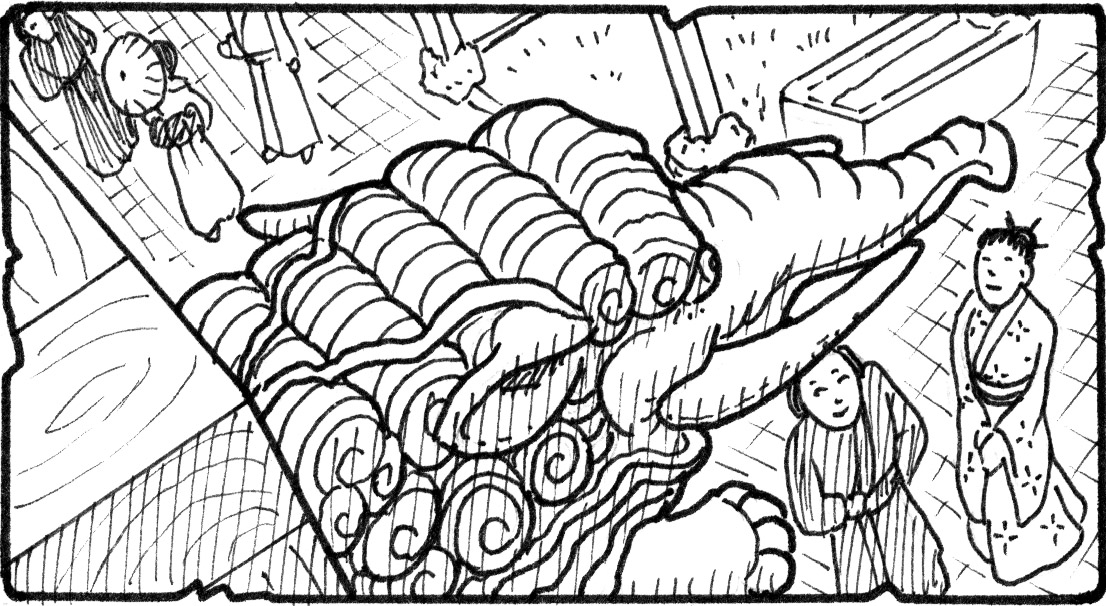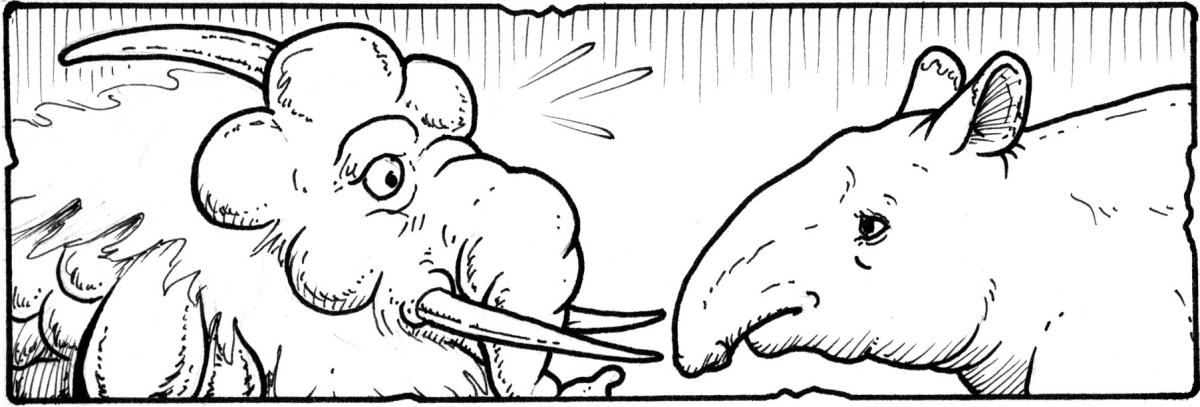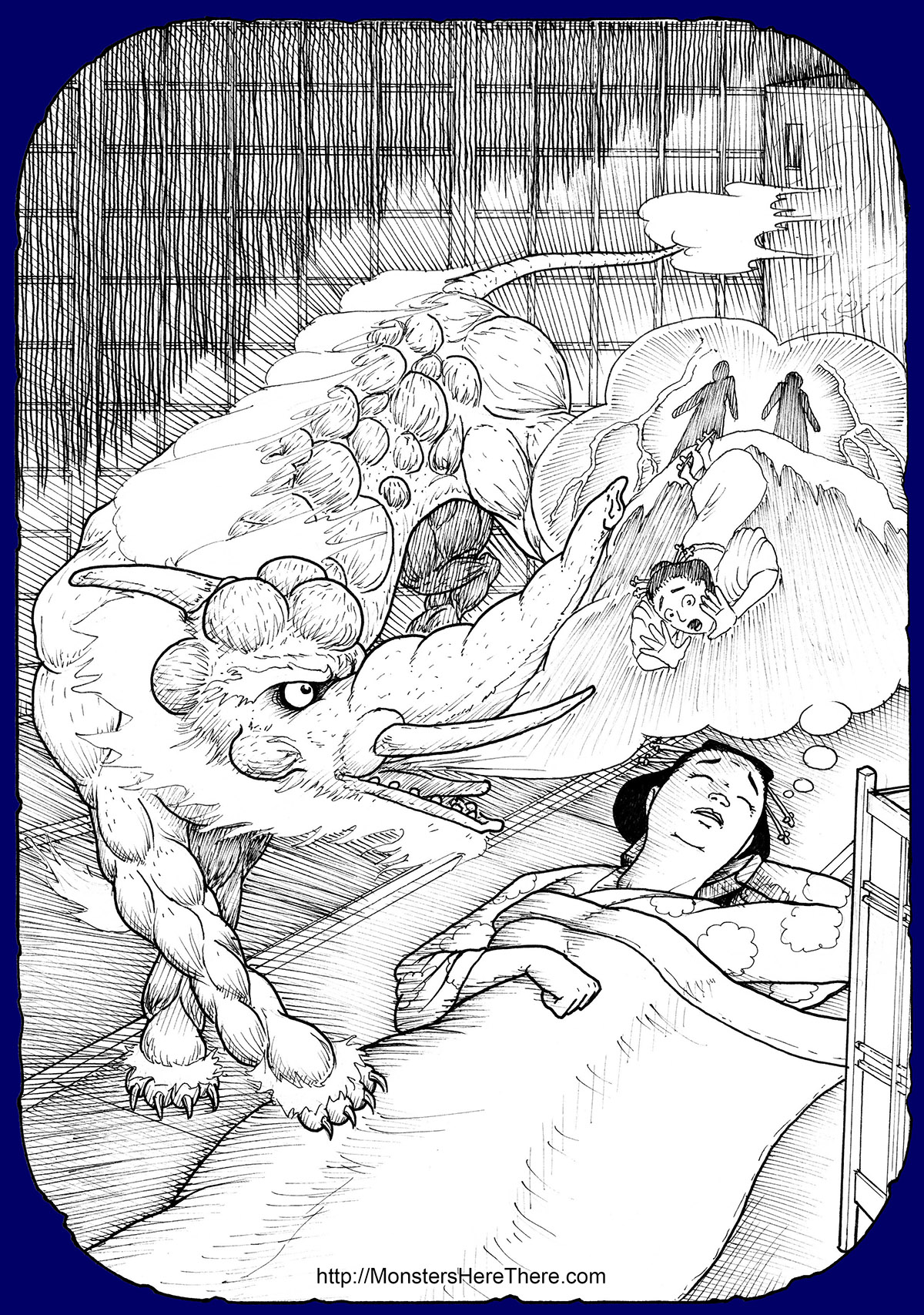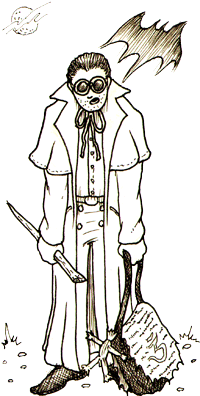| Area(s) Reported: Asia: Japan
Date(s) Reported: Timeless
The Baku [獏] of Japan are a rare sort of monster that actually benefits those humans they haunt; this is because they are believed to eat bad dreams! According to ancient Shinto beliefs, all bad things that humans think, do, and have happen to them ― diseases, accidents, evil urges, etc. ― were caused by evil spirits; and this included nightmares. There was once a general belief in Japan that if a nightmare was not dealt with quickly, it would become the portent of something very real and very bad. Luckily, Baku eat the spirits that cause nightmares to happen, which can prevent the nightmare from ever becoming anything more than a bad dream. The evil spirits that caused the nightmares could be chased away or even destroyed by calling a Baku immediately upon waking: “Baku kurae! Baku kurae! Baku kurae! (pronounced “ba-ku ku-rai-eh”... “Baku, come eat! Baku, come eat! Baku, come eat!“). More useful still, an evil spirit that brings bad dreams might be scared away altogether before causing the nightmare by simply having a picture of a Baku nearby, or writing the creature’s name on a pillow. Just by reminding evil spirits that a Baku could be in the area, the spirits would often leave the house entirely alone! My Own History With Baku I first ran into tales of the Baku in the same place that most English speakers did since early on in the 20th Century... while reading a copy of Lafcadio Hearn's 1902 book, Kotto [my Baku design above is based on an illustration from Hearn's book, by the way.] Lafcadio Hearn was an unusual guy; born in Greece, he had lived in several European countries and the United States for forty years, supporting himself as a newspaperman and writer, before he moved to Japan. Hearn fell in love with the country and culture, and soon learned enough Japanese that he was recovering old tales and stories from the ancient books he was finding in bookstores around the country... and to say I'm jealous doesn't cover it! The tale of the Baku, as I told it above, is all from Hearn; but I've learned a few things more about the creature since. For instance, I was wandering through Shinto shrines and Buddhist temples in Kyoto and on Sado Island in Japan back in 2003, when I noticed something I'd never heard of previously... right up in the woodwork of the roofs and gates of many of these sacred structures, right next to other guardian creatures such as Tigers and Ryuu (Japanese 'dragons'), I saw a number of Baku carved in (and generally painted blue). It would seem to indicate that the Baku of old didn't just eat spirits that caused bad dreams... it's likely that Baku are capable of eating pretty much any bad spirits, hence the reason they would be guarding shrines and temples. I was quite impressed to see them there! 
Anyway, while it is not exactly known when the belief in the dream-eating Baku actually began in Japan, illustrations of the monster are known to have been in possession and use of the upper classes in the 14th and 15th centuries (1300 - 1499 CE). And by the 17th century (1600 CE) the tale of the beast and its image were well-known among the entire population of the country. The Baku’s Changing Appearance The Baku was generally conceived of as a spirit beast more than a biological animal... but this didn’t stop people from trying to describe it. The illustrations of the Baku from ancient Japan are now believed to be based on a Chinese monster called the “Mo,” descriptions of which seemed to have reached Japan in the 14th century. The tales of this Chinese beast, a picture of which could ward off evil spirits, may have been combined with 7th and 8th century (600 - 799 CE) Japanese legends of a dream eating monster to create the first drawings of the Baku. No one seems to know what the original Japanese dream eating monster looked like... so no one may actually know what a Baku is supposed to look like! In descriptions, Baku have generally been explained in terms of known animals. For example, one description says it has “the body of a horse, the face of a lion, the trunk and tusks of an elephant, the forelock of a rhinoceros, the tail of a cow, and the feet of a tiger” (the same description states that female baku looked entirely different; but doesn’t tell us in what way). No matter what the description of the Baku is, one detail remains the same... the Baku always has a long snout, like a short elephant’s trunk. The Chinese “Mo” that current Baku pictures are based on also had this snout, because the Mo was likely based on an animal with this physical trait: the Malayan tapir. 
Because of the believed connection between the Baku and the Mo, and the Mo and the Malayan tapir, the very word “Baku” in Japanese now means “tapir” as well as being the name of the dream-eating monster... and because of this double-meaning to the word “Baku,” in modern Japanese comic books it has become a customary joke to draw a tapir eating dreams like the monster Baku does. Now, for many people in Japan, the image of a Malayan tapir is what they think of when the Baku is mentioned!
See also: Amabiko [あまびこ] and the Amabie [アマビエ], Mo, Jiaotu, Nietie, & An: Metal-Eaters of China, Ryuu, Yogen no Tori [ヨゲンノトリ]: The Bird of Prophecy | |










